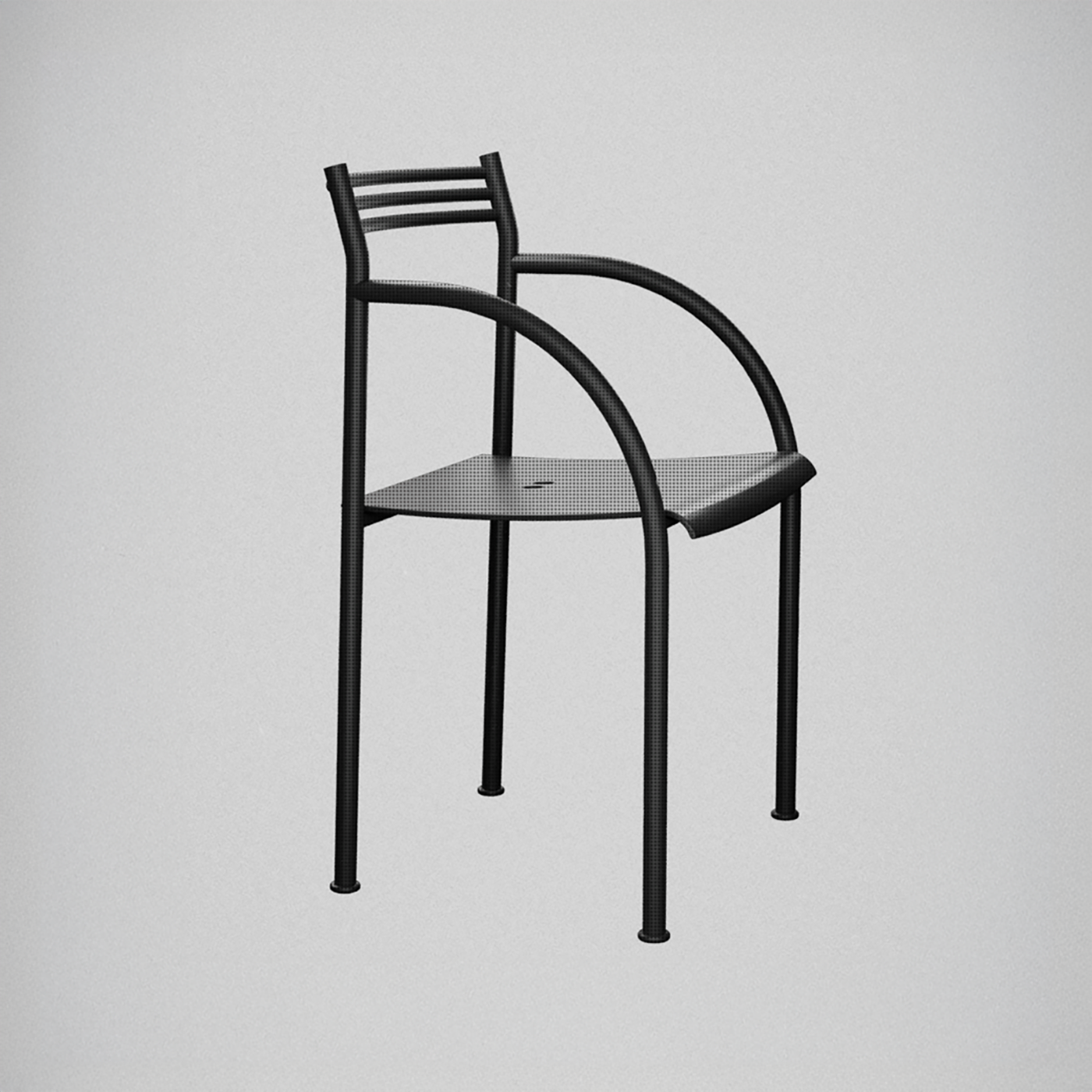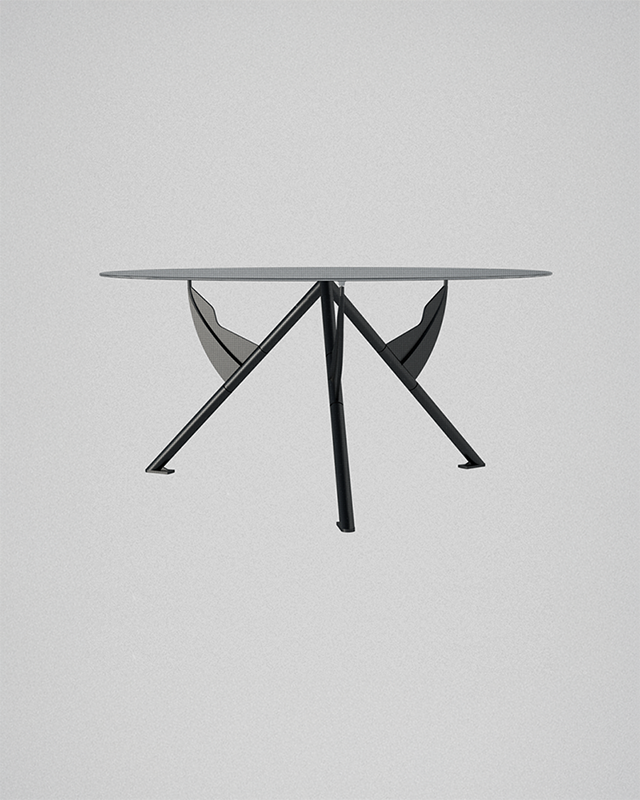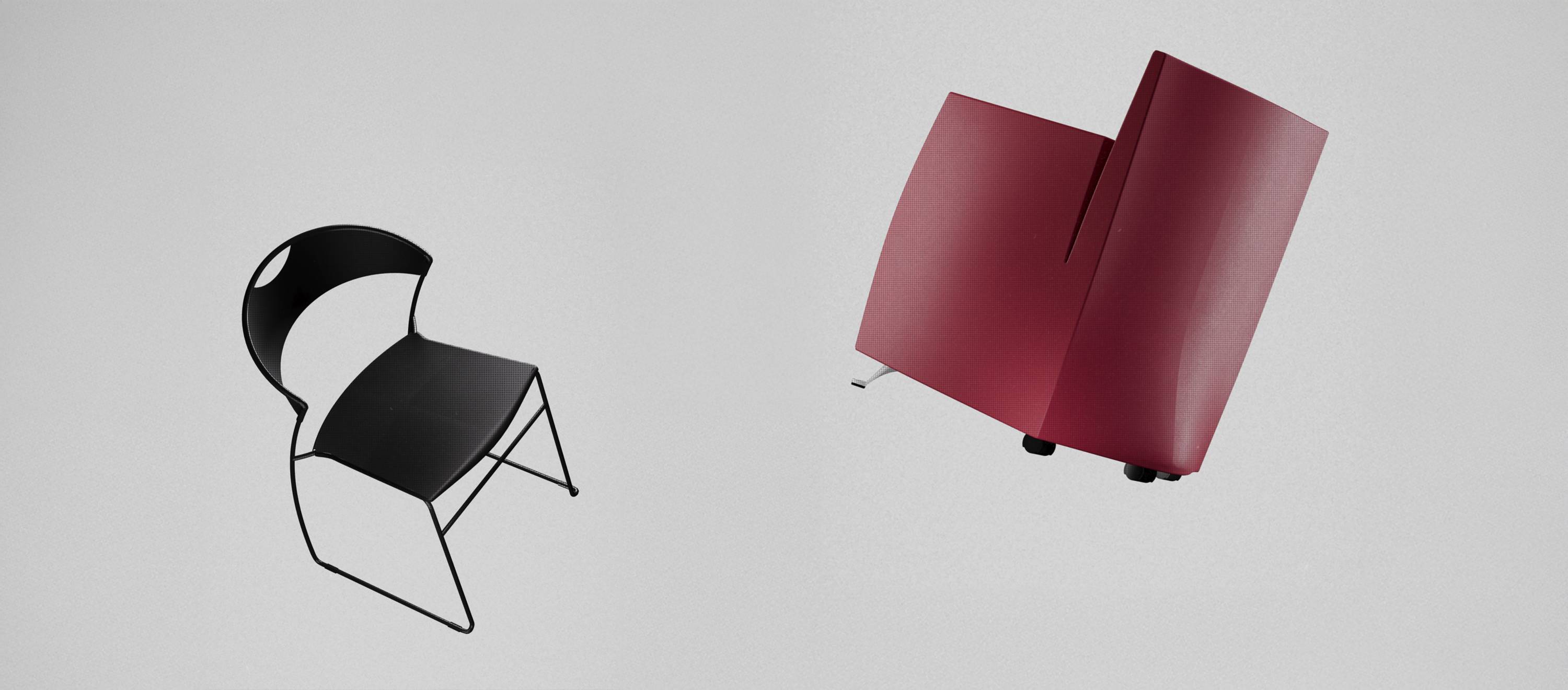

Re-editing the Masters
In 2024, Baleri Italia celebrates its 40th anniversary. For this special occasion, the company has selected and reissued some iconic pieces designed by three Maestros: Philippe Starck, Hannes Wettstein and Angelo Mangiarotti. Key and charismatic figures within Baleri Italia, these Maestros and their furniture have written the history of the brand and are back as protagonists in the product catalogue.
The first products to be relaunched are signed by a designer who has worked with Baleri Italia since 1984: Philippe Starck. The Francesca Spanish chair and the President M table date back to 1984, the year in which the brand was born.
The chair is named after a character from “Ubik”, a novel by Philip K. Dick which captured Starck’s imagination. At first sight the design looks neat and stripped to its essentials to stress the functional nature of the object, but the backrest pushes forwards hooking itself onto the arms which in turn curve boldly down to become the legs with a gentle change of proportions. The simple design become complex, the object slides into another dimension and takes on an explicitly physical presence.
Président M is the table designed for François Mitterrand’s private study at the Elysée Palace. Created to the minimum, it is composed of only 3 structural parts and can be completely dismantled. The tubular legs are a secondary structure, providing the base for the fins or wings on which the transparent glass tabletop is resting. These biomorphic silhouettes are so visually striking and so ideally suited to their function that the tabletop seems to be floating on thin air.
The re-edited products by Hannes Wettstein are three: Juliette, Caprichair and Bill.
Juliette was born out of the frenetic turmoil of Wettstein's design activity: there emerged the idea of a chair that defied all known logic, the structure of the back, curved forward. With this idea as the basic condition of the design, form was transformed into function. When the project was revised for industrial production, the back also became an arm and the chair was transformed into a small armchair. This "supersleek" creation, which seems to have been created out of thin air, is surprisingly comfortable.
Caprichair is a precise idea: function perfectly expressed. A playful, almost anthropomorphic form, a serendipitous exemple of details and small finishing touches. Its formal and conceptual idiom wavers, at times dominating, at time relaxed. Caprichair is the first of a family of products which can be utilised both in the home and in the office.
Bill recovers the idea of the low-slung American sofa, exploring both its limitations and its possibilities. The final result is a sofa that suggests an extreme freedom of use, where sitting still is as natural as lying down, that does not interfere with the space, whether domestic or public, but rather returns the pleasure of casual ease.

Finally, Angelo Mangiarotti: his T-Table is an essential piece of furniture that stands out for its attention to detail. What might seem like a contradiction in terms - the essential and the distinctive detail - has been resolved by Mangiarotti by means of the simple combination of two “L” shaped extrusions that become a “T” with a single 45° cut: the table as a child would draw it is thus transformed into a visually refined and suspended object, and a structurally solid, light product.
